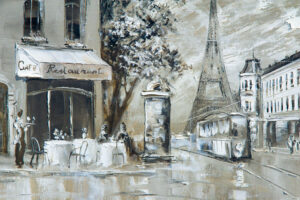Whether you’re drawing or painting, there are many different types of techniques you can use in your artwork. Foreshortening is one of them. It is used in every two-dimensional art form from painting, drawing, illustration, graphics, and even representational quilting. Applied to everything drawn in perspective, foreshortening was a popular technique during the Renaissance. Learn more below.
Definition of foreshortening
Foreshortening creates the illusion of an object receding into the background. It does so by making that object appear smaller and overlapped, thus enhancing the depth of a painting. Think of the classic drawing with a single road stretching out towards the horizon. As the road moves further away, it will appear narrower than it does closer to the viewer.
The effects of foreshortening
How does foreshortening affect the objects in a painting? In one of a few ways:
- Objects become smaller the further away they are from the viewer
- Objects up front will be larger and overlap objects further back
How to incorporate foreshortening
Foreshortening sounds simple, but in practice in can be difficult to understand for beginners. The key is practice. Start with drawing objects from real life and comparing individual shapes to better understand how objects appear at a distance. For example, you can sketch a building from a particular angle to learn how the back edge of the building appears smaller than the front edge. You can also try figure drawing with small wooden mannequins to see how foreshortening affects the body of living beings.
At Creative Ventures Gallery, our beginner classes can help you master the technique of foreshortening. To learn more, contact us today.

